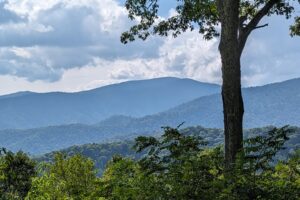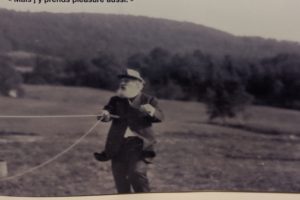Our exploring up to arriving at this park has taken us on walks rather than hikes; today that changes. The featured trail in this park is the Marble Mine Trail that also is an approach to Pinhoti Trail, a 335-mile Southern Appalachian Mountains trail.

The Pinhoti Trail’s southern terminus is on Flagg Mountain, near Weogufka, Alabama, the southernmost peak in the state that rises over 1,000 feet. We walked (yes, walked) about 1/2 mile along this trail, but to get to it and then get back home was definitely a hike.

















This is a fairly large area where these buildings were. What do you think they were used for?

We figured this building and the remains of other buildings came from the mining days. But what were they for? One of the park employees said these buildings had been used for storing explosives for the mine further up the road. Now the cement blocks make sense.







history of mining here
The park had some printed information that gave us the history of mining for marble in this location. After this history, we’ll continue our hike.
“Although it had been discovered very early that a vein of marble ran up the valley some three miles east of Summerville, it was not until 1923 that it was decided to exploit this stone. It was in 1923 that Frank Dodd brought a sample of marble from his farm to Summerville and had it sent to the State Geologist for assaying.
“Mr. Dodd’s land adjoined the lands of John D. Taylor, and Mr. Taylor, along with E.W. Sturdivant, brought in several ‘experts,’ including Sam Tate who owned the Tate Marble Quarries at Tate, Georgia. [Tate Ornamental is still operating in NW Georgia.] All the men who came to evaluate the deposits expressed confidence in the quality and a ready market for the marble. This left only the question of whether or not the marble veins were large enough, without imperfections, to make it of commercial value.
“Mr. E.W. Sturdivant quarried a full carload from his farm at his own expense. This marble came from a quarry near the Floyd State Park and was shipped to contractors in Atlanta who were to cut and polish it and use it in the construction of a building there. Unfortunately, the name of the building which used the Chattooga County marble is unknown.
“The quarrying was done under the supervision of Mr. Lamb Goodwin. The most difficult part of the operation was transporting the marble from the quarry and loading onto railroad cars blocks of marble which weighed over 8,000 pounds each. Brown Transfer Company of Rome was hired to load and transport the marble to the railroad in Summerville and load it on the cars.
“All the bridges between the quarry and U.S. 27 had to be taken up and the sills replaced with heavy timbers which were then floored with 3-inch oak. Mr. Brown also carried oak skids along on his trucks which were placed crosswise over the bridges over the sills in order that the huge wheels of the trucks could roll across the bridges directly over the sills. Undoubtedly, these were the heaviest loads ever hauled in Chattooga County, and they were moved on the biggest trucks to have operated in the county at that time.
“The marble was described by experts as unusual in that it had greatly varying colors. Some was light flecked with dark spots, some mottled, and some with wood-like grains. Black, flecked with quartz-like white spots was described as the most beautiful. One man described this stone as appearing like ebony studded with jewels.
“Like the iron and coal mining, marble quarrying lasted only a short time in the county. Although the quality of the marble was high, the quantity and expense involved in quarrying it and getting it to the railroad made it unprofitable.”
Now you know all about marble mining in NW Georgia!
Pinhoti Loop Trail
Just past the marble mine was the beginning of the loop trail to the Pinhoti Trail. It’s only 3/4 of a mile; how hard could that be? Our original goal was to get to the mine, now our goal is to hike the Pinhoti Trail!

The steep hike up the loop trail had so many switchbacks that we lost count, but at least they made the 500 foot difference in elevation from the mine easier to navigate.




We are so proud of ourselves for making this steep grade down the loop.



As we mentioned at the end of the previous post, we decided to leave this state park a day early so we could try out a couple of Harvest Host locations on our way home. Ready for a different kind of experience?




